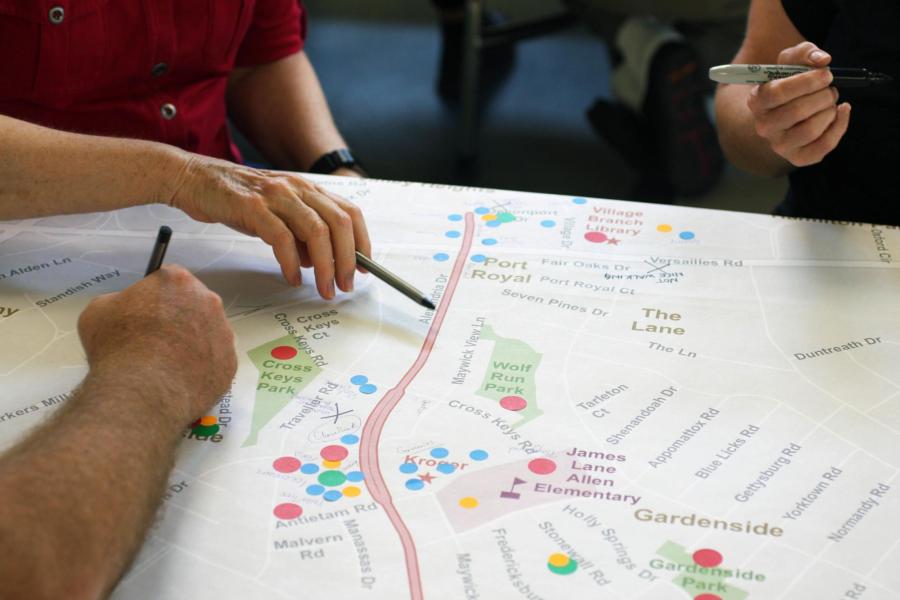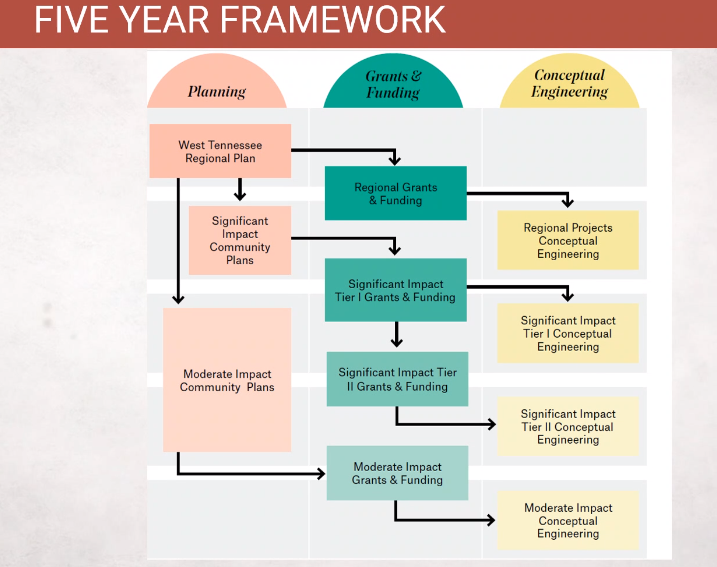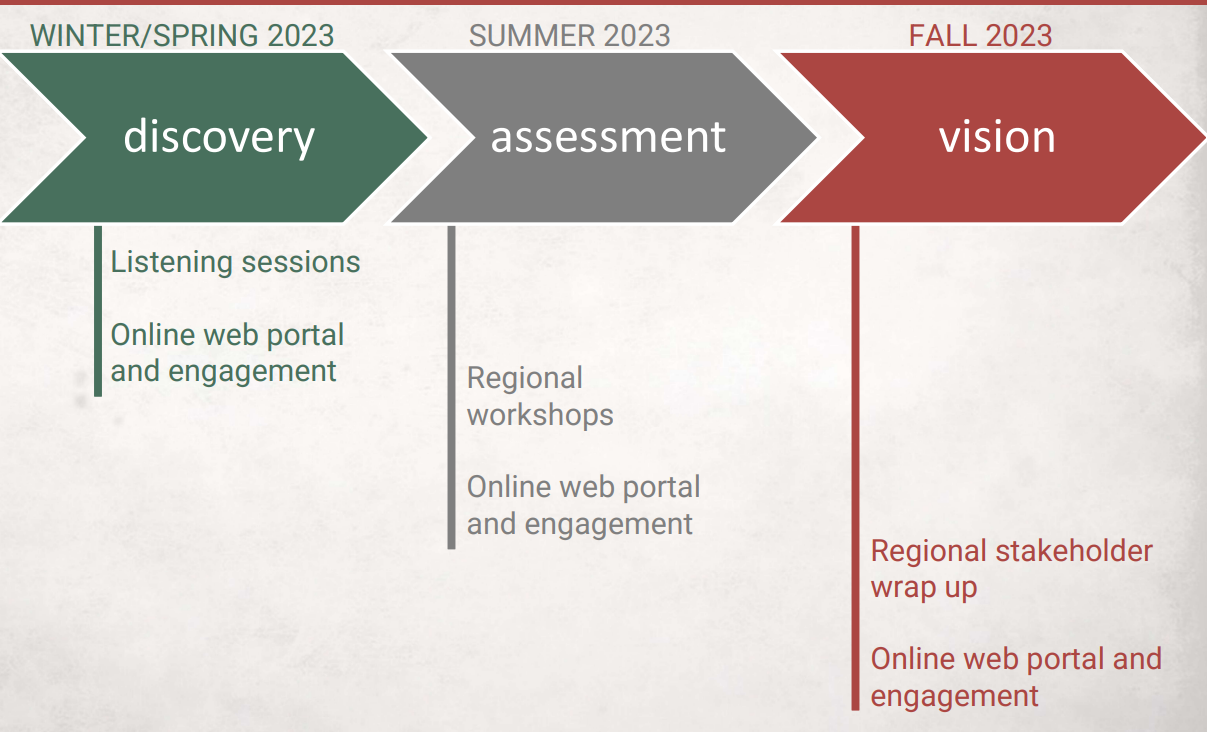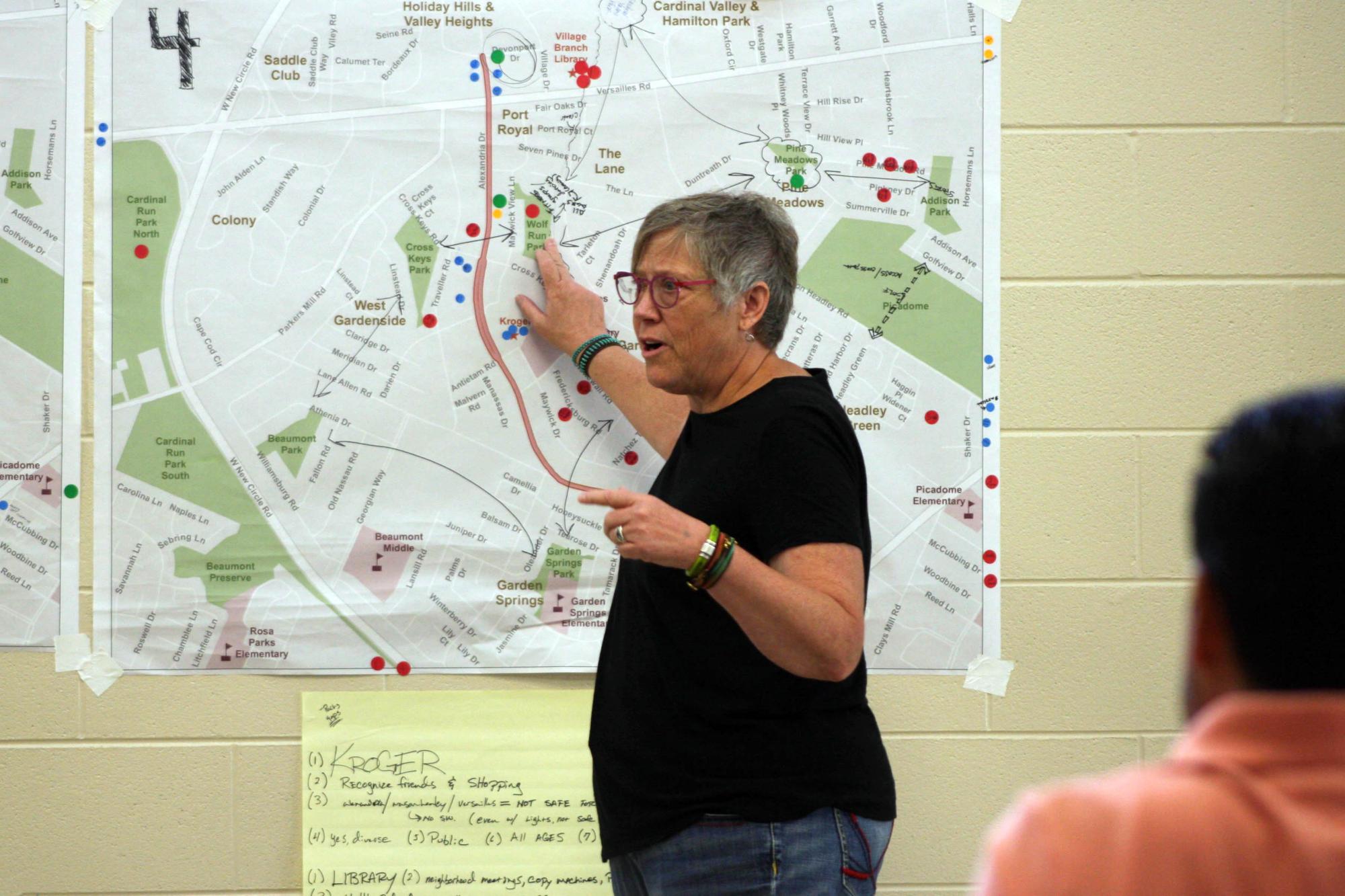Gresham Smith outlines planning process for Blue Oval, West TN communities

By KATE COIL
TML Communications Specialist
Regional planning work aimed at addressing needs for transportation, utilities, land use, and housing in West Tennessee to facilitate Blue Oval City and related growth was the focus of a recent community meeting.
Eric Lusher, the planning department leader and project consultant for Blue Oval City with firm Gresham Smith discussed the steps and goals of regional planning efforts during the Tennessee Department of Economic and Community Development’s (TNECD) most recent Blue Oval Community meeting. The state has a $5 million contract with Gresham Smith to conduct regional planning for the West Tennessee region to meet the needs of the Blue Oval facility.
Lusher said the planning process will look at a variety of topics.
“This is a pretty broad assignment,” Lusher said. “There are projections of population and employment forecasting. We will also be looking at services related to water and sewer, utility planning, land use planning, rail planning, transportation, planning, and housing needs. The contractual mechanism also gives us the opportunity, when we see the appropriateness to do so, to do initial conceptional design and engineering studies. We know a lot of the work we are going to be doing – not just in regional planning but in subsequent efforts – are going to have hard infrastructure recommendations.”
FRAMEWORK AND UNIFORMITY
The goal is for the regional plan to be a framework to serve all the communities in West Tennessee in a way that provides uniformity and meets needs.

“We anticipate the regional plan will make a lot of recommendations in terms of what are the impacts to individual communities, identify regional needs, and understand where there are gaps in funding and planning,” he said. “It will also identify where there are opportunities for additional conceptual engineering. Everything flows in this regional plan. We anticipate in subsequent activities we will move into a series of different types of planning efforts. We know there is obviously and understandably a lot of questions about why are we starting with a regional plan. It’s important because it provides us a framework to provide consistent and really standardized assistances to all West Tennessee communities.”
Part of the plan will also be to offer recommendations about what needs are most vital in order to move forward.
“Instead of us just responding to first come, first serve, this really gives us an opportunity to look at the region, understand those impacts, and develop mechanisms to directly prioritize those recommendations that we make,” Lusher said. “We are going to be very transparent about what that prioritization process will include. That process will certainly include technical planning analysis but will also include a lot of community input. We also want to make sure it aligns for long-term goals for the region and long-term goals for your community as well.”
Because regional projects are larger, more time consuming, and more challenging, Lusher said the regional plan will help identify what opportunities for cooperation are available and ways in which multiple communities can have similar needs met.
“Finally, it gives us a mechanism to cooperate,” he said. “We have a lot of communities in this 21-county region, and we anticipate that a lot of the needs are not going to be limited to any one community. There are going to be projects and initiatives that cross jurisdictional boundaries. This gives us the opportunity to highlight those first and also gives us the opportunity to accelerate those as we need to.”
TIMELINE
The planning process will be broken down into three stages over the course of the year. The discovery phase will last through the spring of this year followed by the assessment phase in summer 2023 and ending with the vision phase in fall 2023. Lusher said each phase feature different opportunities for community engagement.

Lusher said the discovery phase will include community engagement in the form of listening sessions in various communities, regional data collection, review and compiling existing and legacy plans from communities throughout the region, and will result in a discovery document. Lusher said the hope is that existing plans in local communities will “feed up” into the regional plan. Gresham Smith will also be working with TDOT and TDEC on plans for transportation and water and wastewater that are already underway.
“The discovery phase is all about understanding what is happening in West Tennessee,” Lusher said. “Now, we know what is happening, but we want to document and understand it from a data perspective and what is happening in each of your communities. We will be doing what I call regional data collection. We will be looking at your transportation system, utilities systems, land use plans, and understating how all that reflects that is happening in the region. Likewise, we will be reviewing and compiling all the planning work that has been happening in the region already.”
The hour-long virtual listening sessions will bring together invited community leadership beginning in March to understand the needs and priorities of communities. Both Gresham Smith and TNECD will be working with community leaders to connect them to these meetings.
The assessment part of the plan will include the development of anticipated conditions, a gap analysis, and both virtual and in-person regional workshops as part of community outreach resulting in an assessment document. Lusher said the assessment phase will also allow to focus on what individual communities need to focus on and will fit into the larger regional plan.
The vision part of the plan will include regional infrastructure projects and initiatives, community impact analysis, identifying future planning needs, regional stakeholder wrap-up meetings, and a regional planning document. This phase will help identify gaps, the impact each community will have on the future of West Tennessee’s growth, and that planning reflects the needs and desires of communities.
COMMUNITY ENGAGEMENT
Throughout the process, another form of community engagement will be through an online web portal that will offer a document center, presentations and videos, surveys, and an interactive map of the region.

“As the project evolves and moves through the process, there will be more and more material,” he said. “You will start to see this become a repository of documents. There will be mechanisms for surveys. A key piece of this is the interactive map, which will change over time as we work through different phases of the plan. In the early phases, our opening interactive map will be a big map of West Tennessee in something resembling a Google set up. There will be the ability to provide pinned comments geographically on this map including ideas, needs, and thoughts that you and the members of your community have. As we get to the end of it, we will get to a place where that map includes the projects and the recommendations we have so people can see them and understand them.”
The final regional plan will include an evaluation and prioritization of projects, an evaluation and prioritization of planning needs, a funding analysis, “cut” sheets outlining each project and needs, city and county-level reports, an executive summary, and a comprehensive regional planning document.
One of the challenges of planning in general is that it often reveals needs and gaps that are unexpected. While transportation and utilities are projected to be major needs, Lusher said the fact that work is already being done in those areas may mean different issues come to the forefront during the planning process.
“We often go into something thinking this is going to be the hot topic just to find out something else is the hot topic and then along the way we discover another hot topic,” he said. “I’ve done enough planning to know that it is always good to anticipate and be ready to expect what we think the areas of focus may be to change. One of the elements of the regional plan that speaks to its importance is that it gives the opportunity through a process to uncover areas of critical need that aren’t necessarily getting the attention or conversation they need.”

